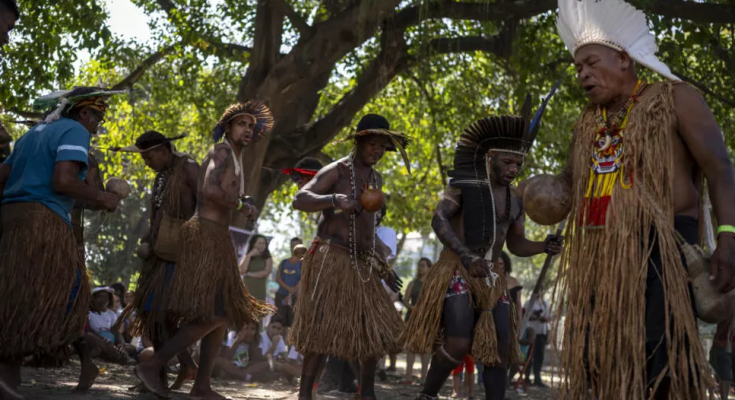Brazil’s Indigenous people hail return of sacred cloak
Rio de Janeiro – With the beating of drums and pipes filled with medicinal herbs, the Tupinamba people of Brazil are counting down the final hours of a 335-year wait for the official return of a sacred cloak taken in colonial times.

The highly symbolic artifact, held at the National Museum of Denmark since 1689, will be presented in Rio de Janeiro in a ceremony to be attended by President Luiz Inacio Lula da Silva on Thursday.
The return of the ceremonial cloak is part of diplomatic efforts by Brazil’s government to recover other Indigenous objects from museums in France, Japan, and elsewhere.
Measuring just under 1.8 meters (6 feet) high and featuring red feathers of the scarlet ibis bird, the cloak arrived back in Rio in early July, where it is being stored at the national museum.
“I felt sadness and joy. A mixture between being born and dying,” said Yakuy Tupinamba, who viewed the artifact after travelling more than 1,200 kilometers (745 miles) by bus from the eastern Olivenca municipality.
The 64-year-old, wearing a feather headdress, is among roughly 200 Tupinambas camped in grounds near the museum, where they held a traditional vigil with maracas-filled music.
Yakuy said Europeans “put (the cloak) in a museum, as if it were a zoo, for art scholars to observe… (But) only our people communicate and engage with such a symbol.”
‘Stop to the devastation’

It is not known how the cloak left Brazil, though experts believe it was first made in the mid-16th century, when the country was under Portuguese colonization.
Its return is part of a push by President Lula’s leftist government to better support Brazil’s Indigenous people, who are also demanding territorial demarcation.
The mantle “is our father and our mother. Our ancestors say that when they (the Europeans) took it away, our village was left without a north,” Sussu Arana Morubyxada Tupinamba, one of those camping near the museum, told AFP.
“Now we have a direction again: the demarcation of our territory by the Brazilian state,” added the Indigenous chief.
The Tupinambas have demanded the government recognize the boundaries of more than 47,000 hectares (116,000 acres) where around 8,000 families live, making their living from fishing and farming.
They say the mineral-rich territory is being devastated by large agriculture and mining businesses.
Despite being a government promise, only a handful of territories have been recognized since Lula began his third term in January 2023.
“The return of the mantle means — not only for the Tupinamba people but also for the Brazilian people — a stop to the devastation of the Amazon, of the forests, of the mangroves,” said Cacique Arana.
Thursday’s ceremony in Rio will likely take place under a cloud of smoke from wildfires that are impacting several parts of Brazil, as it faces a devastating drought.
Thousands of fires have been unleashed, including in the Amazon — a phenomenon that scientists say is linked to climate change.



